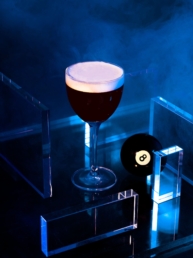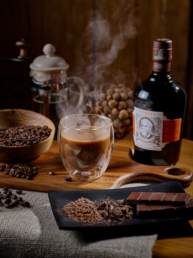ASIA PACIFIC, 21 DECEMBER– The delicious mix of coffee and craft spirits, two of the world’s greatest pleasures, has been quietly growing up with the second Golden Age unfurling globally.
Certainly, individuals have been elevating their coffee by adding spirits long before cocktail culture emerged, but the surge of coffee cocktails in the modern canon has been bolstered by two drinks from the last century: the Irish Coffee in the 1940s and the Espresso Martini in the 1980s. Both are fairly simple cocktails that let the coffee shine, they’ve inspired a movement to combine coffee and spirits in cocktails all over the world.
In Australia, coffee culture has long been at the forefront, with baristas and roasters taking it just as seriously as the cocktail scene takes their mixology. Charlie Ainsbury, Senior Bar Consultant at Proof Creative confirms this notion, “Coffee is synonymous with Australia, dare I say that if there was a capital of the Espresso Martini, we would be it.”
“The complexity and familiarity of coffee just show how diverse the humble coffee bean can be depending on how you choose to extract its flavour. It can be dark, rich, and bitter and it can also be light, silky, and fruity. I also enjoy the immediate affinity guests have with coffee in cocktails.”
Seemingly simple on the surface, coffee’s taste and aromatic profiles are complex and can range from fruity to earthy, bright to rich, spiced, and chocolaty, all with some signature bitterness. Like any agricultural product, coffee beans evoke the terroir from where they are grown, with different roasting and production methods coaxing out a spectrum of flavours before it gets to your cup. The complexity and versatility of the beans are not only what make it such a vastly intriguing beverage on its own, they also make coffee ideal to utilise in cocktails.
“Well, there is the obvious energy boost but also coffee can be used in so many ways from being the main flavour in a cocktail. The roasted bitterness from the coffee compliments many other flavours like citrus and dark berries,” General Manager of 28 HongKong Street, Chris Peart explains, “Coffee also mixes with most liquor categories – whisky, rum, agave, fruit liquors… There are many possibilities when using coffee in lovely tipples!”
For the true connoisseur ready to develop their own recipe, consider what characteristics coffee can bring to your cocktail and highlight or contrast from there. Bright lemon, toasted pineapple, caramelised oak, nutty coconut, and rich chocolate each make fantastic compliments to different beans and roasts. Select a direction for your cocktail, then build it out with supporting ingredients to tie it all together, working with the complexity of the coffee.
If you just want to dip a toe in the waters of coffee cocktails, the Espresso Martini, Irish Coffee, or Carajillo won’t disappoint. A self-proclaimed Espresso Martini lover, Peart explains what makes a great tipple.
“A good one is usually made using a spirit other than vodka. Personally, a good dark rum like Diplomatico Reserva Exclusiva, or an Anejo tequila. The coffee liqueur should be something decent but not super dry and still have some nice sweetness to it that goes really well with some freshly made espresso. You should also be good at using a coffee machine! Finally, a few dashes of saline can be a nice addition. Keep it simple with quality ingredients across the board.”
These simple cocktails keep coffee front and centre with big, bold taste profiles. When you’re ready to brew up your own signature style, think of coffee as a supporting flavour, in tandem with the base spirit. Any spirit can work with coffee in the right preparation, but beginners can start with rum, bourbon, or vodka. When ready to level up, try working with gin, mezcal, or amaro. Coffee also works well when updating classic cocktails, whether spirit-forward, like an Old Fashioned or Negroni, or refreshing and citrus-based, like a Daiquiri or Sour. Ainsbury will most likely gravitate to something with barrel age, or richness in spirit but it can be eye-opening to challenge yourself to do the opposite.
Whatever direction, the coffee must be brewed fresh. This will allow for the best concentration of true flavours from the beans. Incorporate chilled espresso into a syrup or try cold brew for long drinks. For garnish, use whole beans, grate over a Microplane for zest, or mix into a salt or sugar rim.
Ainsbury shares, “Your base ingredient of coffee doesn’t just mean espresso. Experiment with as many methods of extracting flavour as possible, with different levels of roast and using different terroirs. When you do, experiment again! The possibilities are infinite, every person has a personal favourite type of coffee drink so let yourself go wild.“





